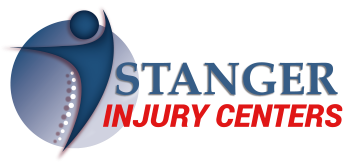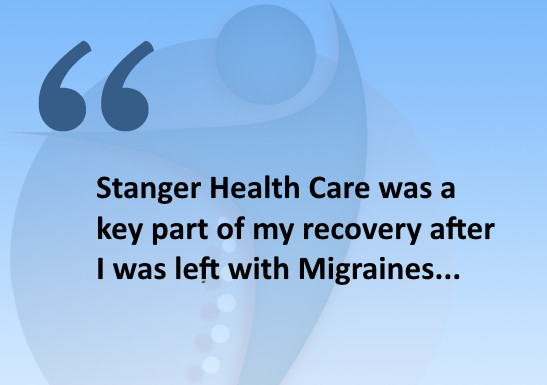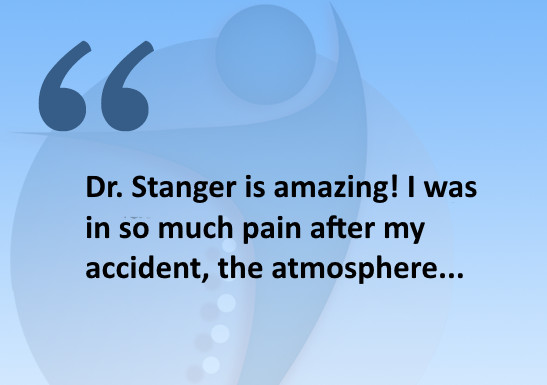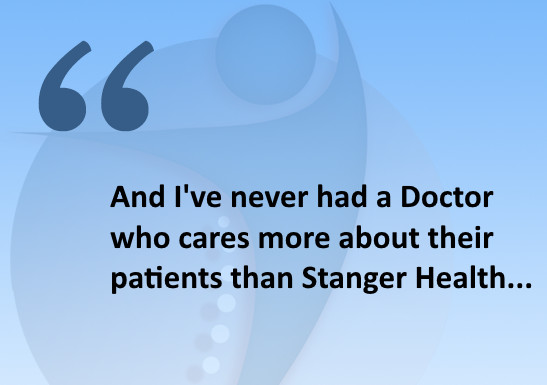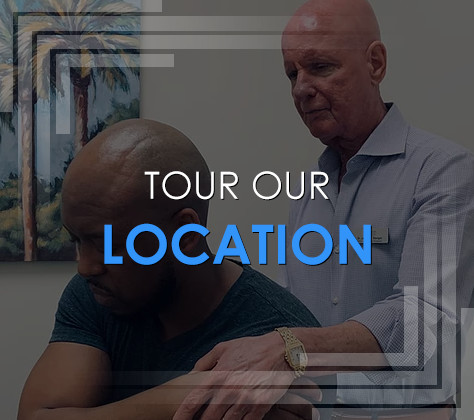
Leg Injuries
Sciatica is a term used to describe leg pain that radiates from your back into your buttock, and down the back of your leg. It is a general term used to describe symptoms rather than an actual physical condition. Typically, the pain is caused by pressure on the nerve roots in your lower back. Doctors often call it lumbar radiculopathy, meaning that the pain begins in the spinal nerve roots and “radiates” to your leg. Depending on the cause, acute sciatica typically resolves with rest, exercise, and other self-care measures. Some people suffer from chronic pain that continues despite treatment. You play an important role in the prevention and healing process of leg pain. Strong, flexible muscles help to promote a healthy back that maintains good alignment, allows movement, and provides structural support.
Anatomy of the back
The sciatic nerve is formed from the spinal nerves in the lumbar and sacral regions of the spine . The spinal nerves are numbered according to the vertebrae above which it exits the spinal canal. The spinal nerves L4 to S3 form the sciatic nerve. You have two sciatic nerves, one on each side, which travel through the pelvis and down the back of each leg where it divides into the peroneal and tibial nerves. This nerve provides feeling and motor control of your legs and feet .
Types of Leg Pain
Leg pain ranges from mild to severe, and is classified as either acute or chronic. Acute sciatic pain often relates to soft tissue injury (e.g., sprains of muscles, tendons, or ligaments) or disc herniation. Acute pain occurs suddenly and usually heals within several days to weeks. Its severity relates directly to the extent of tissue injury and resolves with over time. It is often called acute mechanical back pain, because the source of the pain may be in the spinal joints, discs, vertebrae, or soft tissues. Chronic sciatic pain persists (lasts more than 3 months) and its source may be hard to determine. Chronic pain may be present all the time, or worsen with certain activities, poor posture, and improper body mechanics. Other contributing factors may be related to nerve cell changes, tissue scarring, arthritic changes, or psychological effects of chronic pain. In some cases, the complexity of chronic symptoms requires consultation with medical specialists .
What are the symptoms?
Classic sciatic pain affects one leg, starts in the low back and buttocks, travels down the back of the thigh, past the knee to the foot. The leg pain is worse than the back pain. Your pain may range in intensity from mildly annoying to severe. It’s often described as pressure or burning pain, and some people even experience shooting pain. You may also feel numbness or tingling (pins-and-needles) in your leg and foot, which usually is not a cause for concern unless you have weakness in your leg muscles. Sitting usually causes the most pain because in this position your discs have more weight on them. Activities such as bending or twisting usually make your pain worse, and lying down tends to relieve the pain. You may actually feel better if you walk or run rather than sit or stand for too long. If you experience extreme leg weakness or difficulty controlling bladder or bowel function, a condition called cauda equina syndrome, you should seek medical help immediately.
What are the causes?
There are several possible causes of sciatic pain and they all stem from compression or irritation of the sciatic nerve roots:
- Injury or trauma: A significant force can stress the structures of the spine, for example, sports injury, or fall. Fractures, such as vertebral compression fractures, can result. A tear in the muscles and ligaments of the back may predispose the discs to bulge or herniate.
- Bulging and herniated disc : The gel-like material within the disc can bulge or rupture through a weak area in the surrounding wall (annulus). Irritation, pain, and swelling occur when this material squeezes out and comes in contact with a spinal nerve.
- Stenosis : Narrowing of the spinal canal and nerve root canals occurs as discs bulge or protrude, facet joints enlarge, and ligaments stiffen over time. As the spinal canal narrows, it compresses the cord and nerves, causing them to swell and inflame.
- Osteoarthritis (degenerative disc disease) : As discs naturally wear out, bone spurs form and the facet joints inflame. The discs dry out and shrink, losing their flexibility and cushioning properties. The disc spaces get smaller. These changes lead to stenosis or disc herniation.
- Spondylolysis : A weakness or stress fracture develops in one of the bony bridges that connect the upper and lower facet joints.
- Spondylolisthesis : A weakness in the muscles and ligaments predisposes the vertebra to slip out of normal position. Leg pain can also be caused by a joint problem (e.g., arthritis) in the hip or sacroiliac joint. This type of pain (called referred pain) is quite common, but is not sciatica. Diagnosing the correct problem is important because the treatments for each type of pain may differ.
Sciatica is a term used to describe leg pain that radiates from your back into your buttock, and down the back of your leg. It is a general term used to describe symptoms rather than an actual physical condition. Typically, the pain is caused by pressure on the nerve roots in your lower back. Doctors often call it lumbar radiculopathy, meaning that the pain begins in the spinal nerve roots and “radiates” to your leg. Depending on the cause, acute sciatica typically resolves with rest, exercise, and other self-care measures. Some people suffer from chronic pain that continues despite treatment. You play an important role in the prevention and healing process of leg pain. Strong, flexible muscles help to promote a healthy back that maintains good alignment, allows movement, and provides structural support.
Anatomy of the back
The sciatic nerve is formed from the spinal nerves in the lumbar and sacral regions of the spine . The spinal nerves are numbered according to the vertebrae above which it exits the spinal canal. The spinal nerves L4 to S3 form the sciatic nerve. You have two sciatic nerves, one on each side, which travel through the pelvis and down the back of each leg where it divides into the peroneal and tibial nerves. This nerve provides feeling and motor control of your legs and feet .
Types of Leg Pain
Leg pain ranges from mild to severe, and is classified as either acute or chronic. Acute sciatic pain often relates to soft tissue injury (e.g., sprains of muscles, tendons, or ligaments) or disc herniation. Acute pain occurs suddenly and usually heals within several days to weeks. Its severity relates directly to the extent of tissue injury and resolves with over time. It is often called acute mechanical back pain, because the source of the pain may be in the spinal joints, discs, vertebrae, or soft tissues. Chronic sciatic pain persists (lasts more than 3 months) and its source may be hard to determine. Chronic pain may be present all the time, or worsen with certain activities, poor posture, and improper body mechanics. Other contributing factors may be related to nerve cell changes, tissue scarring, arthritic changes, or psychological effects of chronic pain. In some cases, the complexity of chronic symptoms requires consultation with medical specialists .
What are the symptoms?
Classic sciatic pain affects one leg, starts in the low back and buttocks, travels down the back of the thigh, past the knee to the foot. The leg pain is worse than the back pain. Your pain may range in intensity from mildly annoying to severe. It’s often described as pressure or burning pain, and some people even experience shooting pain. You may also feel numbness or tingling (pins-and-needles) in your leg and foot, which usually is not a cause for concern unless you have weakness in your leg muscles. Sitting usually causes the most pain because in this position your discs have more weight on them. Activities such as bending or twisting usually make your pain worse, and lying down tends to relieve the pain. You may actually feel better if you walk or run rather than sit or stand for too long. If you experience extreme leg weakness or difficulty controlling bladder or bowel function, a condition called cauda equina syndrome, you should seek medical help immediately.
What are the causes?
There are several possible causes of sciatic pain and they all stem from compression or irritation of the sciatic nerve roots:
- Injury or trauma: A significant force can stress the structures of the spine, for example, sports injury, or fall. Fractures, such as vertebral compression fractures, can result. A tear in the muscles and ligaments of the back may predispose the discs to bulge or herniate.
- Bulging and herniated disc : The gel-like material within the disc can bulge or rupture through a weak area in the surrounding wall (annulus). Irritation, pain, and swelling occur when this material squeezes out and comes in contact with a spinal nerve.
- Stenosis : Narrowing of the spinal canal and nerve root canals occurs as discs bulge or protrude, facet joints enlarge, and ligaments stiffen over time. As the spinal canal narrows, it compresses the cord and nerves, causing them to swell and inflame.
- Osteoarthritis (degenerative disc disease) : As discs naturally wear out, bone spurs form and the facet joints inflame. The discs dry out and shrink, losing their flexibility and cushioning properties. The disc spaces get smaller. These changes lead to stenosis or disc herniation.
- Spondylolysis : A weakness or stress fracture develops in one of the bony bridges that connect the upper and lower facet joints.
- Spondylolisthesis : A weakness in the muscles and ligaments predisposes the vertebra to slip out of normal position. Leg pain can also be caused by a joint problem (e.g., arthritis) in the hip or sacroiliac joint. This type of pain (called referred pain) is quite common, but is not sciatica. Diagnosing the correct problem is important because the treatments for each type of pain may differ.
Call Now For More Information About
Stanger Injury Centers
Get Your Free Consultation
Get Your Free Consultation
READ OUR PATIENT TESTIMONIALS
Auto Accident Victims Discover Personal Recovery Success
Auto Accident Victims Discover Personal Recovery Success
